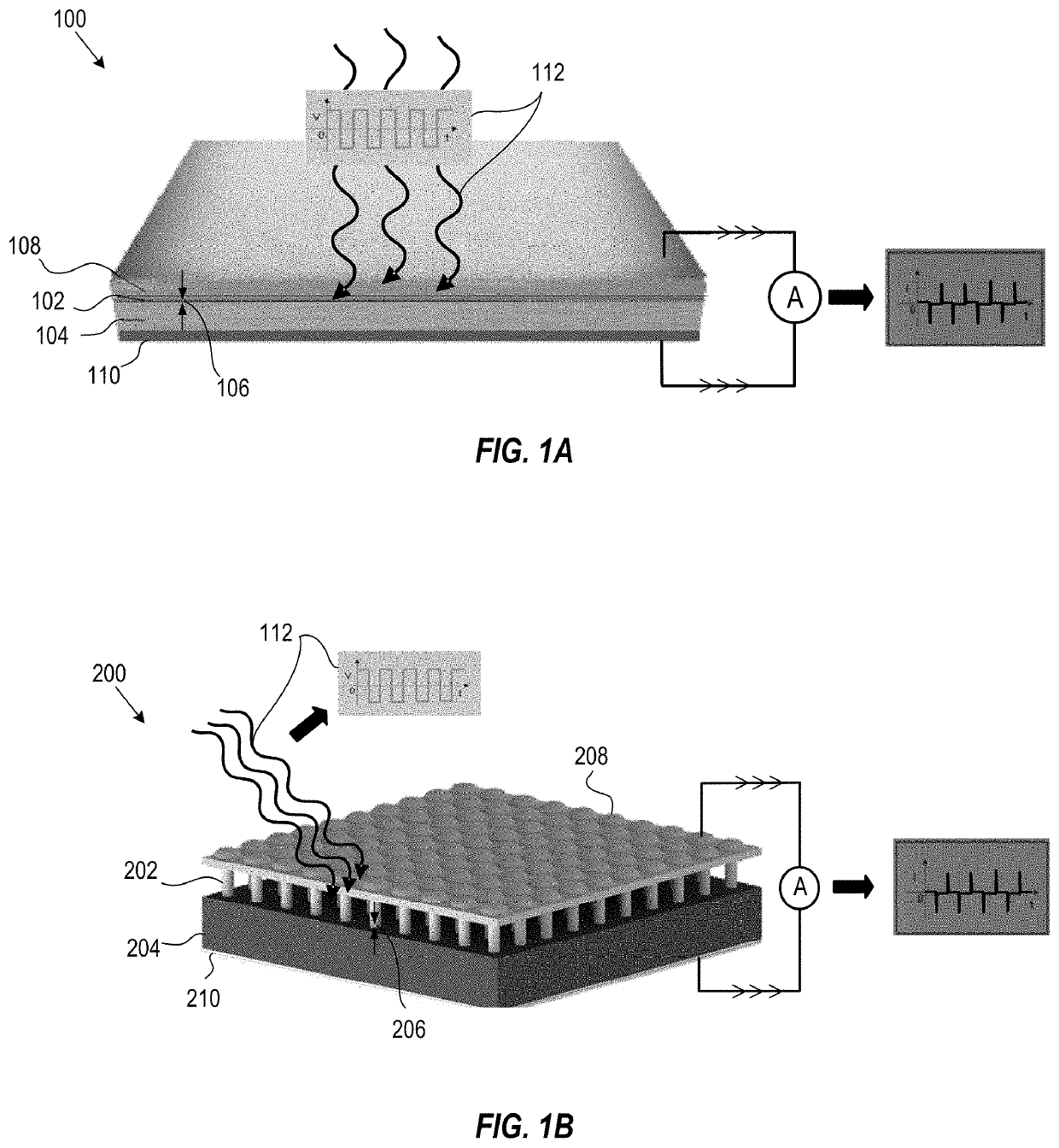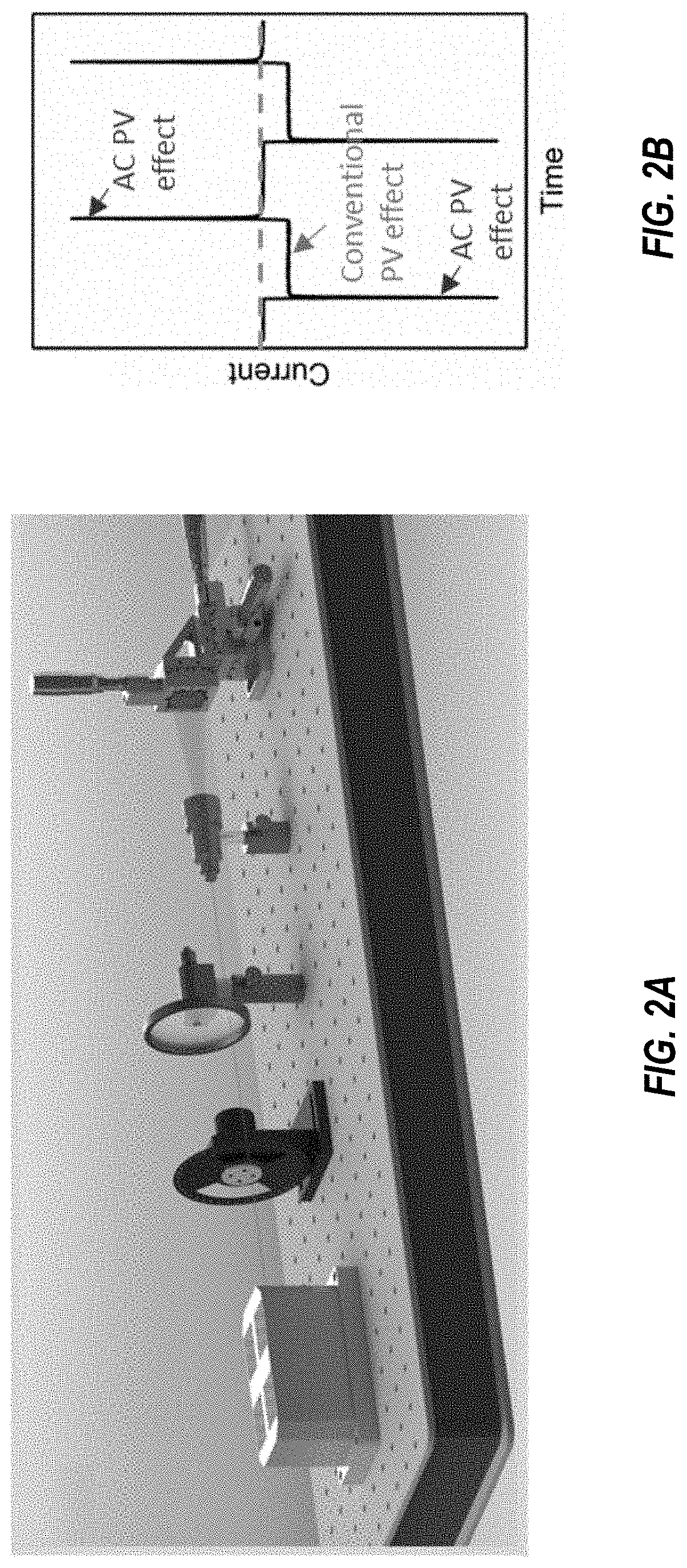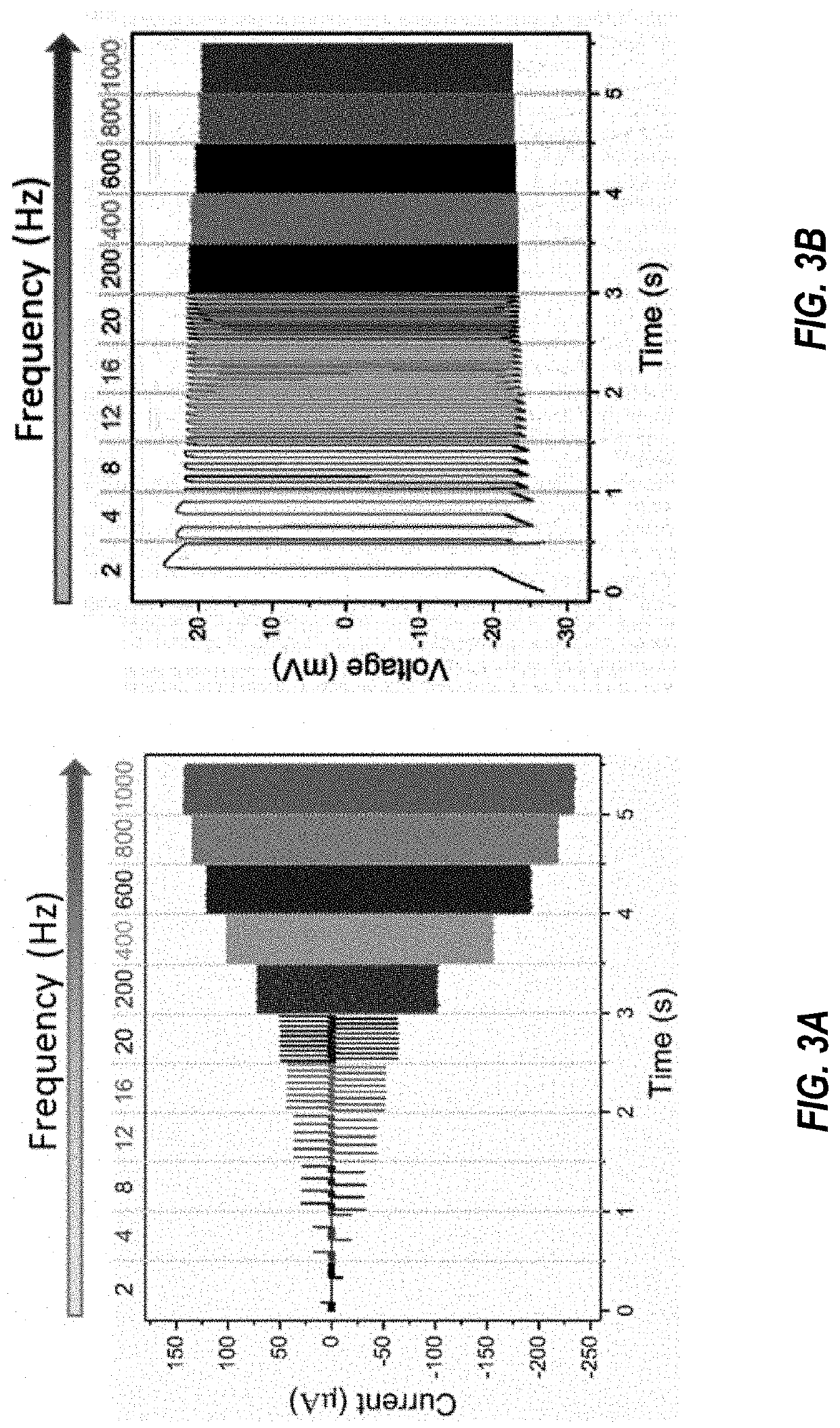Methods and systems for generating alternating current by light
a technology of alternating current and light, applied in the direction of photovoltaics, electrical devices, semiconductor devices, etc., can solve the problem that the energy generated from the conventional photovoltaic effect is limited to direct curren
- Summary
- Abstract
- Description
- Claims
- Application Information
AI Technical Summary
Benefits of technology
Problems solved by technology
Method used
Image
Examples
example 1
ng Current (AC) from Periodic Light Stimulation
[0164]Here, by surprise, it was found that an alternating current (AC) is produced if a light is incident upon the interface / junction of two materials periodically. When the device based on a p-Si / n-TiO2 nanofilm was under illumination of a flashing light at 442 nm with 7.79 mW / cm2, the peak of the AC could reach 236 μA, and the peak of voltage of the AC output could reach more than 20 mV. This means that the observed current oscillates back and forth in the external circuit in responding to the flashing of light. This phenomenon is new, and it cannot be explained by the established photovoltaic mechanisms in literature. The system is rather unique and different in the following aspects. In contrast to the conventional photovoltaic effect and thermoelectric effect, it generates an AC instead of DC. The device uses non-piezoelectric materials, the output characteristics are dissimilar to those of either piezoelectric effect for convertin...
example 2
cal Analysis and the Change of Parameters During the Whole Cycle
[0170]For a mathematical analysis, we adopt a one-dimensional analysis since the lateral dimensions are much larger than the vertical ones. First, the Poisson equation relates the electric potential to the electric charge:
ddx(ϵ(x)dV(x)dx)=-ρ(x),#(S5)
[0171]where x is the coordinate, V(x) is the electric potential, ρ(x) is the charge density in the space charge region, and ∈(x) is the dielectric permittivity of the semiconductor.
[0172]To understand non-equilibrium excess carriers in semiconductors, the continuity equations for electrons and holes is listed as following:
∂n∂t=1dJnedx+Gn-Rn,#(S6a)∂p∂t=1dJpedx+Gp-Rp,#(S6b)
[0173]where n (or p) is the electron (or hole) density, Jn (or Jp) is the electron (or hole) current density, Gn (or Gp) is the net electron (or hole) generation rate per unit volume, Rn (or Rp) is the net electron (or hole) recombination rate per unit volume, and e is the absolute value of t...
example 3
[0187]We take a pn junction device as an example. At the equilibrium status of the system in the dark, the concentrations of donor, acceptor, and recombination center are stable, and they are determined by the Fermi levels and distribution functions (FIG. 18A). The net carrier concentrations are constant and independent of time, the generation and recombination processes must be equal as follows:
n0p0=ni2=NcNvexp(-EgkT);
[0188]where n0,p0 are thermal equilibrium electron and hole concentrations that are independent of time, ni is the intrinsic carrier density, Nc and Nv is the effective density of states in the conduction band and valence band, Eg is the energy gap, k0 is the Boltzmann constant, and T is the temperature.
[0189]When the light starts to shine on the semiconductor, it perturbs the original equilibrium condition due to the light excitations and increased local temperature. In this non-equilibrium condition, excess electrons Δn and holesΔp are created in pairs (Δn=Δp), ...
PUM
| Property | Measurement | Unit |
|---|---|---|
| bias voltage | aaaaa | aaaaa |
| frequency | aaaaa | aaaaa |
| frequencies | aaaaa | aaaaa |
Abstract
Description
Claims
Application Information
 Login to View More
Login to View More - Generate Ideas
- Intellectual Property
- Life Sciences
- Materials
- Tech Scout
- Unparalleled Data Quality
- Higher Quality Content
- 60% Fewer Hallucinations
Browse by: Latest US Patents, China's latest patents, Technical Efficacy Thesaurus, Application Domain, Technology Topic, Popular Technical Reports.
© 2025 PatSnap. All rights reserved.Legal|Privacy policy|Modern Slavery Act Transparency Statement|Sitemap|About US| Contact US: help@patsnap.com



